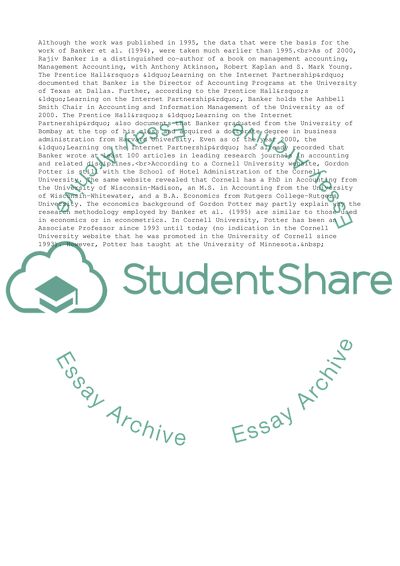Cite this document
(Analysis of Banker's Work Concerning Manufacturing Overhead Cost Article, n.d.)
Analysis of Banker's Work Concerning Manufacturing Overhead Cost Article. Retrieved from https://studentshare.org/management/1751458-critical-analysis-of-research-article-banker-et-al-1995-an-empirical-analysis-of-manufacturing-overhead-cost-drivers
Analysis of Banker's Work Concerning Manufacturing Overhead Cost Article. Retrieved from https://studentshare.org/management/1751458-critical-analysis-of-research-article-banker-et-al-1995-an-empirical-analysis-of-manufacturing-overhead-cost-drivers
(Analysis of Banker'S Work Concerning Manufacturing Overhead Cost Article)
Analysis of Banker'S Work Concerning Manufacturing Overhead Cost Article. https://studentshare.org/management/1751458-critical-analysis-of-research-article-banker-et-al-1995-an-empirical-analysis-of-manufacturing-overhead-cost-drivers.
Analysis of Banker'S Work Concerning Manufacturing Overhead Cost Article. https://studentshare.org/management/1751458-critical-analysis-of-research-article-banker-et-al-1995-an-empirical-analysis-of-manufacturing-overhead-cost-drivers.
“Analysis of Banker'S Work Concerning Manufacturing Overhead Cost Article”, n.d. https://studentshare.org/management/1751458-critical-analysis-of-research-article-banker-et-al-1995-an-empirical-analysis-of-manufacturing-overhead-cost-drivers.


